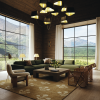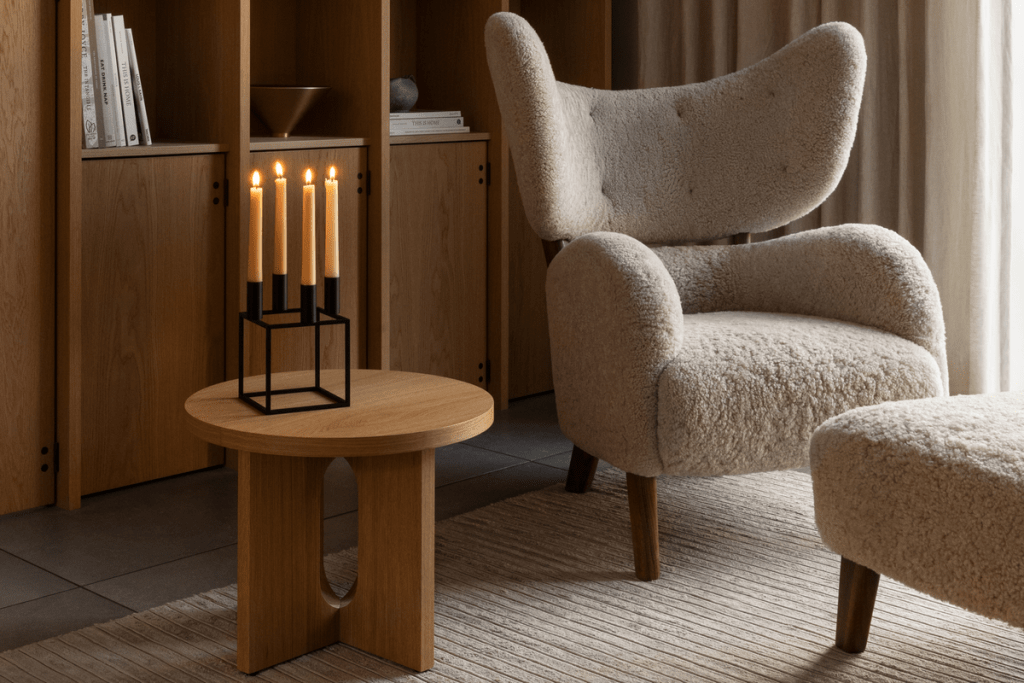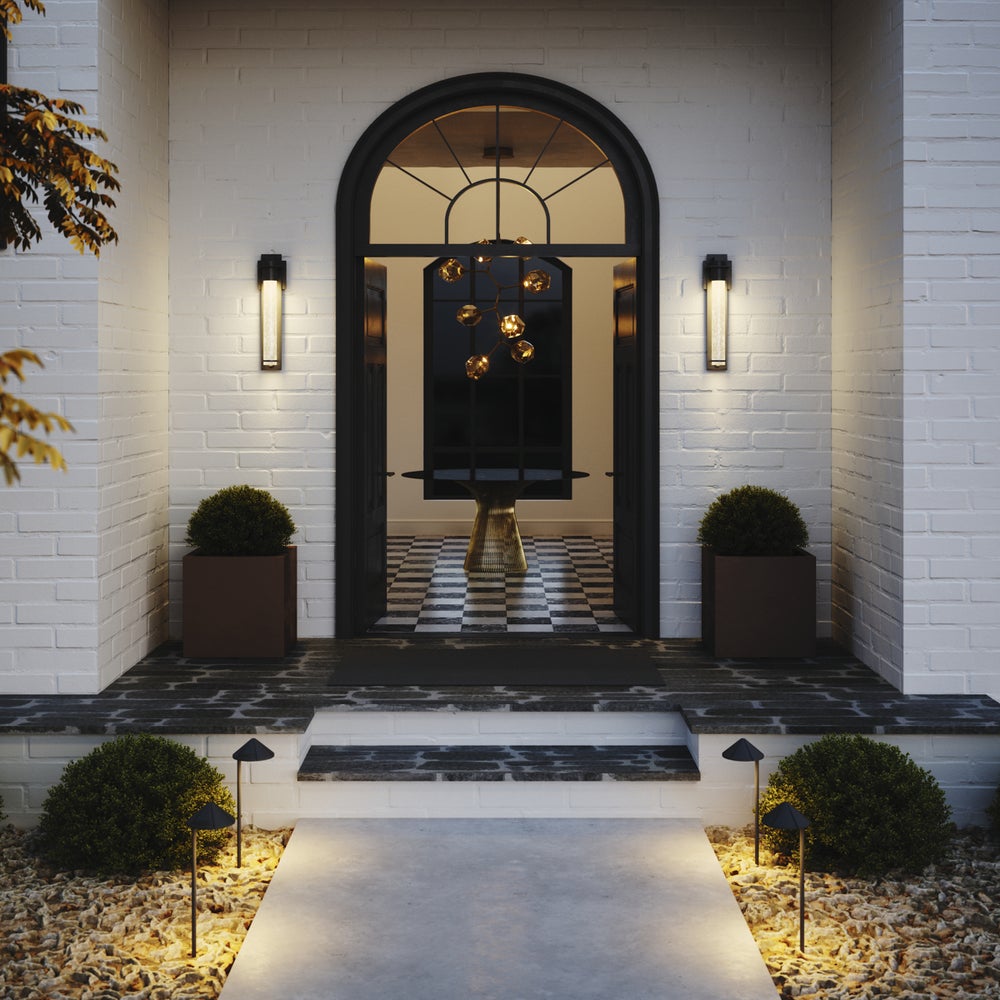
Lighting an outdoor entryway serves several important functions for the threshold of your home. A well-lit front entry welcomes guests, enables a safe passage, lets you identify visitors and makes that ever-important first impression of your home. Selecting the right lighting in this space includes choosing the right size, style and more. This FAQ will walk you through finding outdoor entryway lighting that suits you best.
The Main Considerations for Choosing an Outdoor Entry Light
First and foremost is identifying the home’s architecture. A roof or covered porch over the entrance will influence your outdoor entryway lighting plan. For a smaller stoop, a direct downlight or two is likely all you need. Look for an outdoor wall light that creates a wash of light down the wall to brighten up the area around the door. For a large porch, an even, diffused layer of light will illuminate the square footage. Instead of one large and powerful outdoor light, go for many small patio lights instead. A couple of wall lights with a downwash and a few path lights with a puddling effect will be far more pleasing than having one giant, bright fixture flanking the house.
What types of outdoor entryway lighting are there?
The most common choice is modern outdoor wall lighting, but also pendants, flush and semi-flush ceiling lights and recessed lighting. Typically, it’s best to choose a few to work together and the lighting can be layered, similar to indoor areas.
How bright should entryway lights be?
In the dark, a little bit of light goes a long way. Incandescent wattages can be kept in the 25 to 40 watts range (200 to 500 lumens). If you are using multiple fixtures, stay closer to 200 lumens per fixture. If you have large windows that let the indoor light out, you may use even less light.
Location, Location
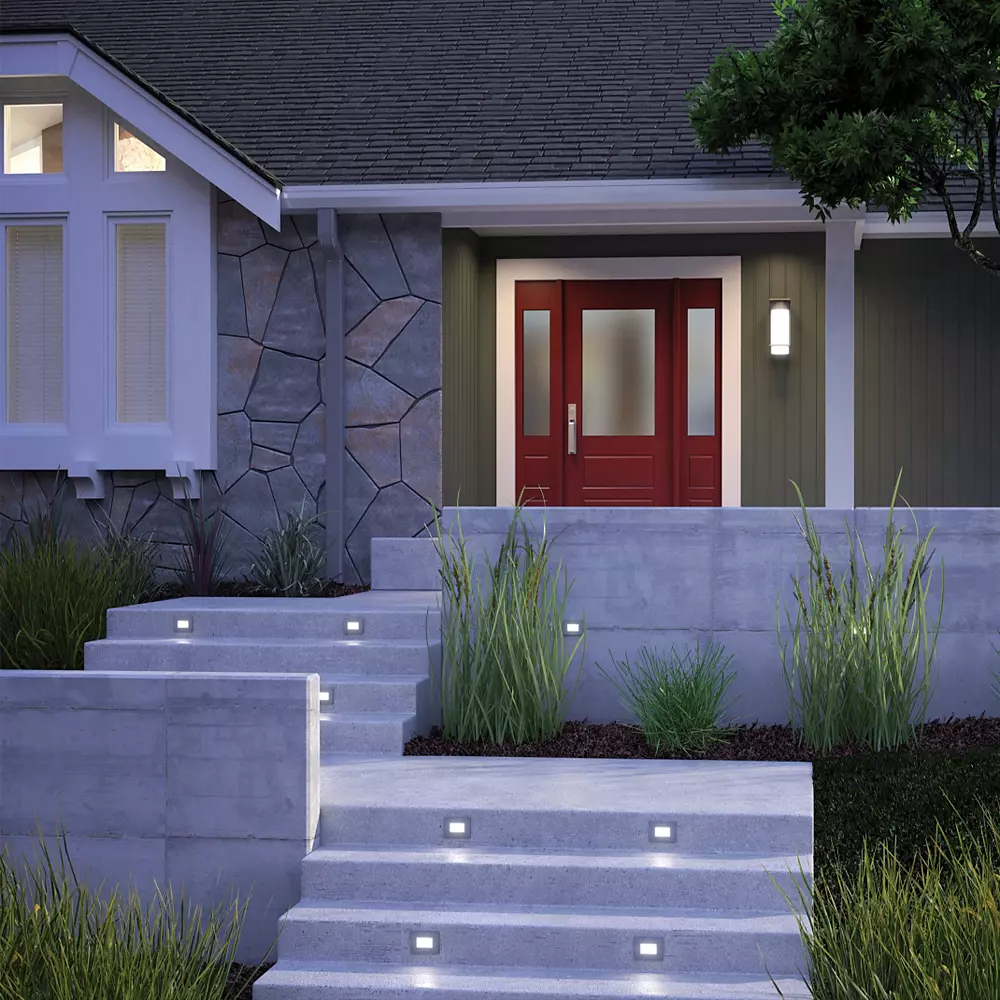
Indoor and outdoor lights sold in the U.S. have an Underwriters Laboratories, or UL rating, on the label. The UL rating tells which location a light is suited for. For example, a dry-rated light is not suitable for outdoors or anywhere that has excessive moisture. If the porch is sheltered and protected from rainwater, a damp-rated fixture is the best option. Wet-rated fixtures use drain holes, seals and protective gaskets to stop water from collecting on live wires and electrical components, so a wet-rated fixture is needed for any porch lighting exposed to rain, fog, snow or salty air.
Size for Outdoor Entryway Lights
Generally, the size of the front door should inform the size of the outdoor entryway lights. For a balanced look, keep these proportions in mind:
- Wall Sconces: ¼ to ⅓ the height and width of the door (including trim)
- Pendants: ⅕ the height and width of the door
- Flushmounts: ¼ the height and width of the door
If considering outdoor sconces and the door is 100 inches high and 60 inches wide, look for fixtures that are about 25 inches high and 15 inches wide.
Front Door Wall Sconces
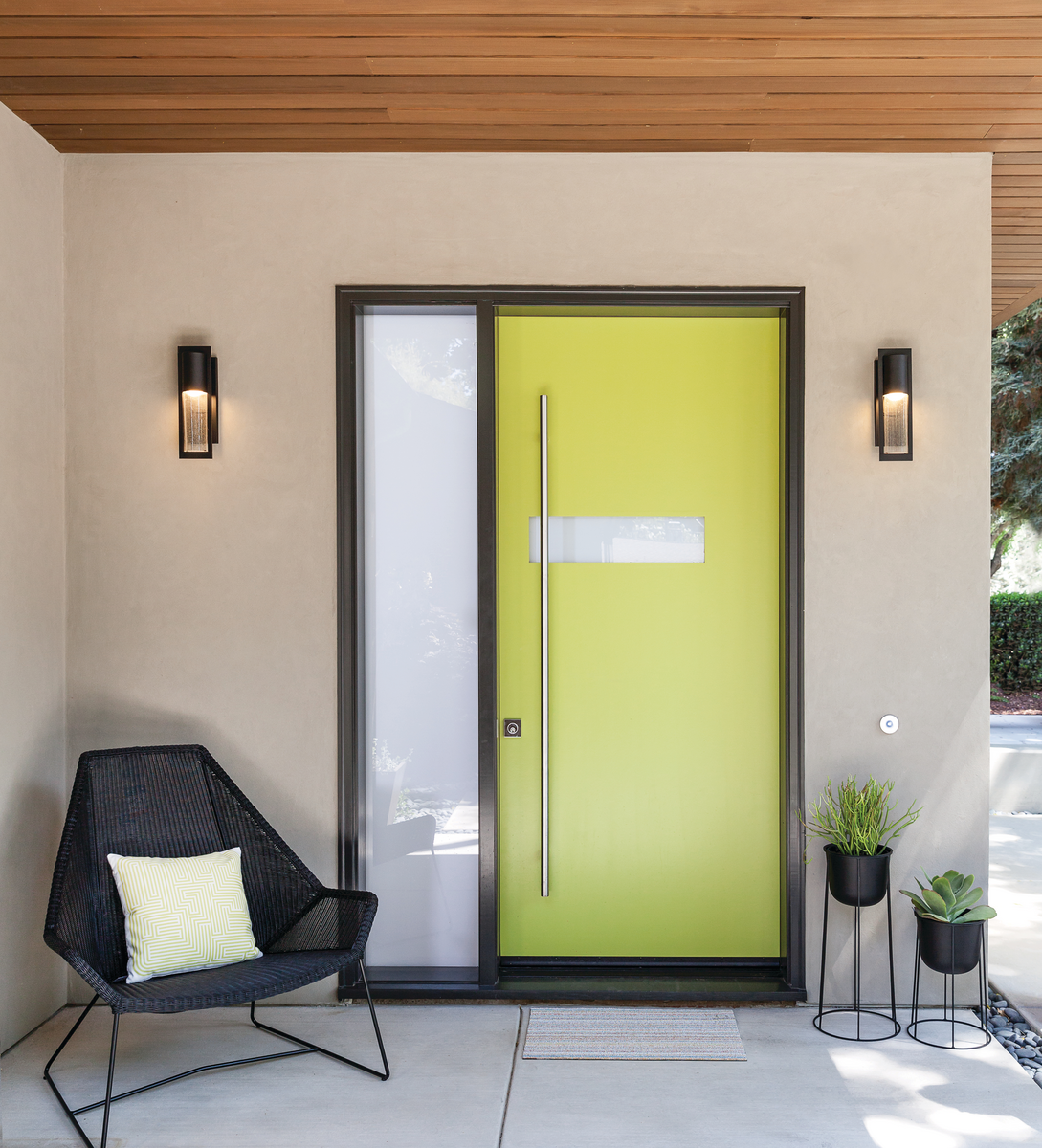
If the front entry is symmetrical, hanging two wall sconces on either side of the door is a natural choice. Flanking the front door with a pair of eye-catching wall sconces can dress up the space, creating an intriguing and inviting atmosphere. Try to purchase wall sconces about a quarter height of the door.
Placement Guidelines: Set outdoor wall lights approximately 66 inches (5.5 feet) from the porch floor to the bottom of the fixture. Leave 6-12 inches on either side of the door casing. For asymmetrical entryways or when space is limited, a single wall fixture will do. Hang it on the doorknob side for a well-lit doorway.
Front Porch Pendants
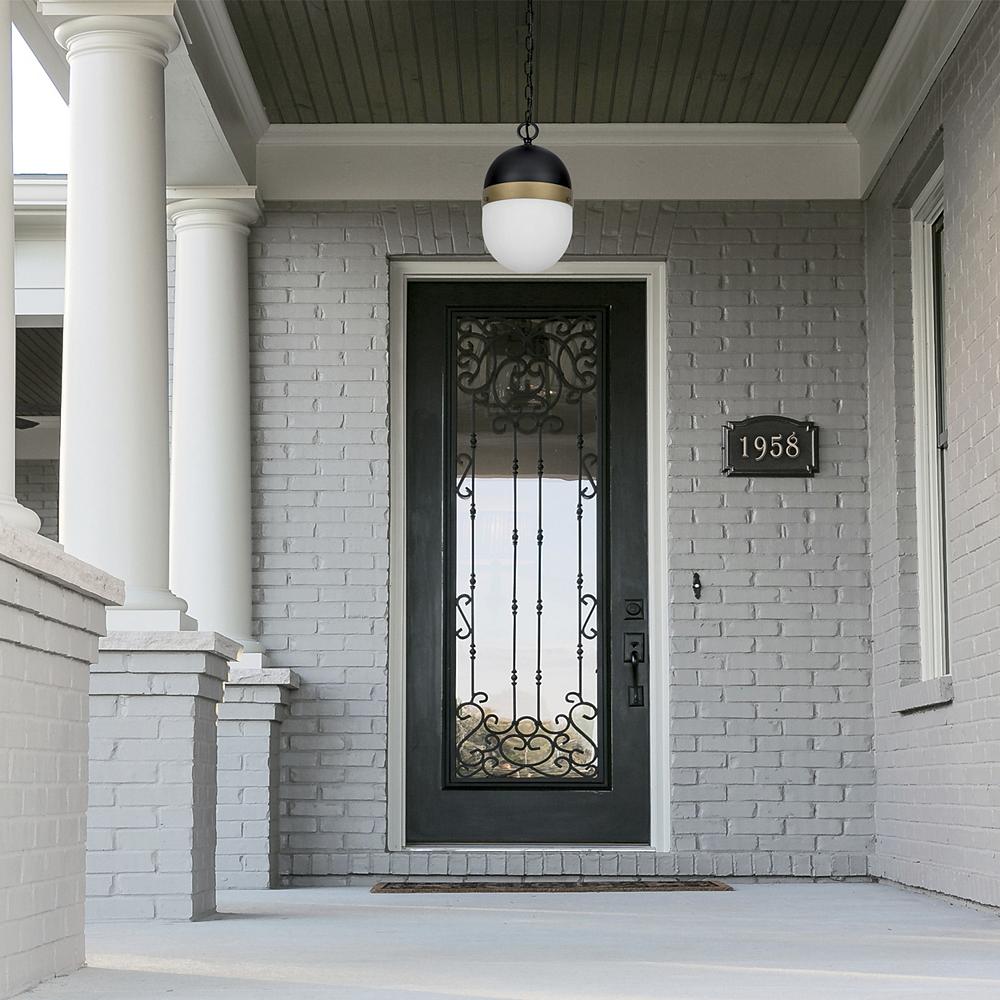
For porches with high ceilings and no wind exposure, an outdoor pendant light is a good choice. A combination of wall and pendant outdoor entry lights in harmonizing styles will make the home’s exterior warm and welcoming.
Placement Guidelines: Hang pendants about 84 inches (7 feet) from the porch floor.
Size: The pendant should be centered about 6 inches above the door. Its size should be about 1/5th the height of the door itself. Pendants are usually hung by chain, wire, cable or stem. With a chain option, there will be more room to adjust the height. Remember that the pendant should be in proportion to the space, so take visual note of how it looks and feels around the entryway, then adjust accordingly.
Front Door Flushmounts
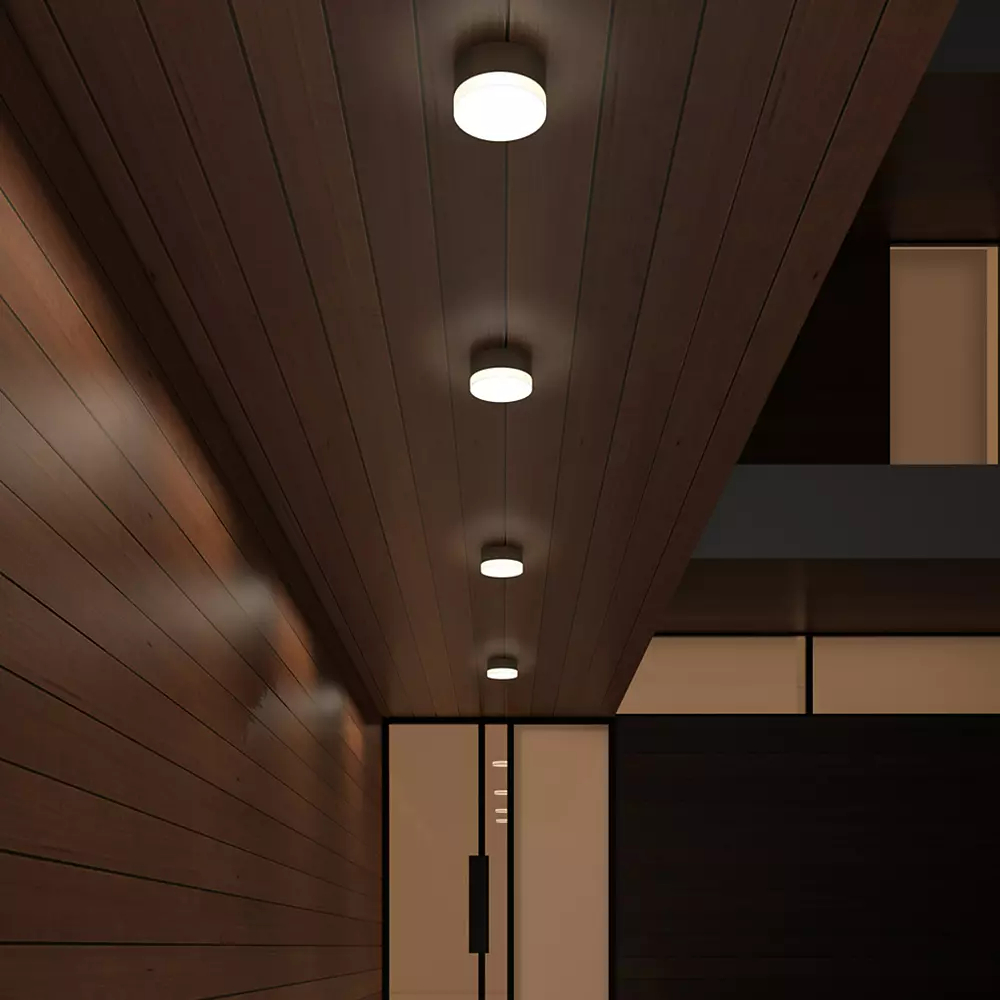
A flushmount porch light adds welcome light without detracting from your main entrance, columns and other architectural elements. If there isn’t enough room on one or both sides of the door for wall sconces, the front porch has a low ceiling or is open to wet weather, a flushmount above the door will be the ideal solution. Place it somewhere that provides ample light to the door as well as the rest of the porch.
Placement Guidelines: Flushmounts should be a minimum of 80 inches (6.6 feet) from the floor.
Remember, homes only have one chance to make a good first impression. No matter what style is chosen, keep in mind lighting the important things: doorbell and address numbers are key for guests, deliveries and emergency responders. The type of fixture and spread of light is up to personal choice – ensure the fixture chosen matches with the style and provides the desired effect to create the most impact.

Outdoor Lamps with Diffusers
The easiest way to ensure you have enough light without going overboard is to look for an outdoor wall light that covers the light source with a shade, plate or heavy diffuser. You don’t want a design that will have you looking directly into the light source. Choosing fixtures with translucent white or frosted diffusers will help the whole fixture be seen. It prevents a glare or a beacon effect, where you only see the bulb filament through the clear glass.
Protecting Outdoor Lights Against the Elements
Outdoor entryway lighting fixtures will be in contact with the elements, so it is important to select those that are “wet-location listed” and designed for outdoor use. Damp-location fixtures can be used under a roof or overhang that keeps them from direct contact with rain and snow. In coastal areas, look for fixtures made of brass, solid aluminum (distinct from cast or spun aluminum), glass, or plastic as these materials hold up better in salt air. Some are made to stand up to climate in these areas with marine-grade finishing.
Outdoor Lighting Fixtures that Match
Having a consistent style starting at the curb with post- or pier-mount lights helps create a unified feeling across your outdoor design. Many manufacturers offer complete outdoor collections that provide a cohesive look. You can also choose to make one piece the focal point and have the others blend in with the surroundings.
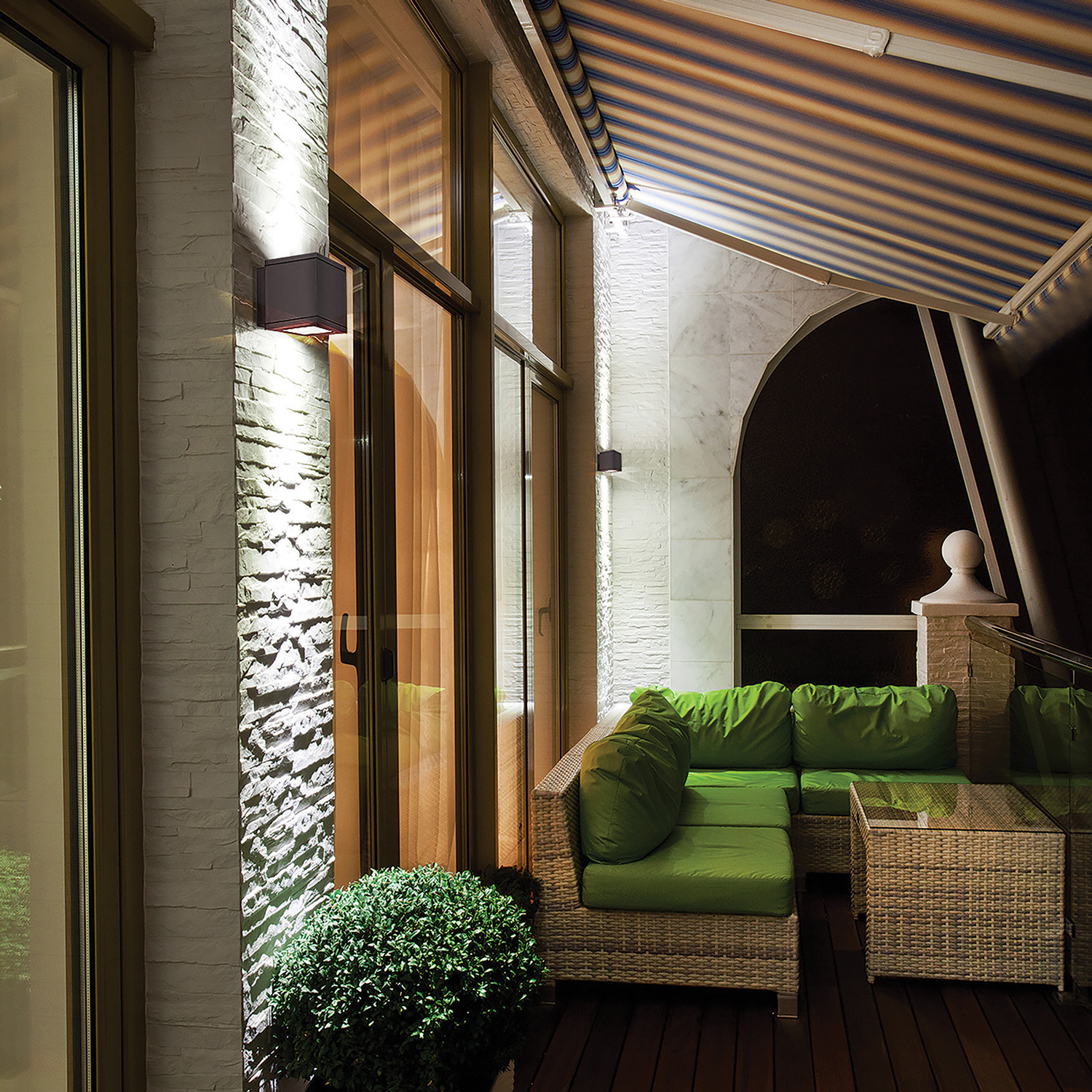
What is Dark Sky Lighting?
Depending on the region you live in, you may or may not be familiar with Dark Sky Compliant lighting, which aims to reduce the harmful effects of light pollution by using a number of design elements. Various parts of California and many coastal areas go so far as to require that your outdoor lighting be Dark Sky compliant, which means 1) the light is no brighter than necessary; 2) blue light emissions are minimized; and 3) the light is fully shielded.
Lastly, consider the lumen output of your front porch light. Many, if not most, outdoor lighting fixtures are available in LED, with the brightness measured in lumens. Getting familiar with the Kelvin color temperature, lumens compared to watts and CRI (Color Rendering Index) will help you ensure that the level and comfort of the front porch light you choose is precisely what you’re looking for.

